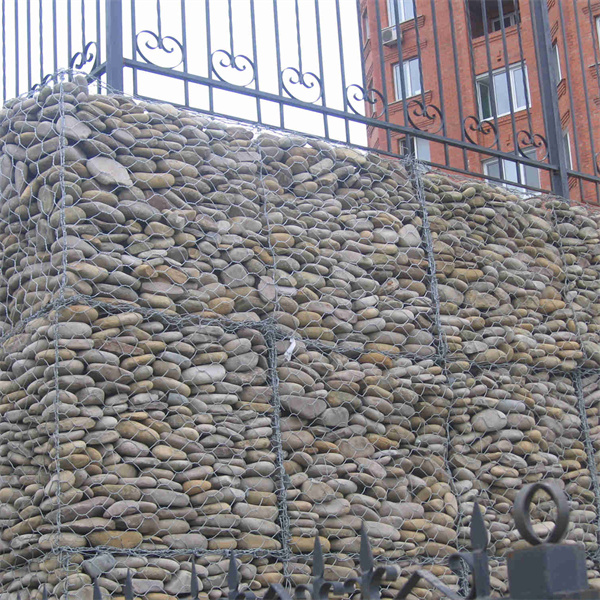nov . 04, 2024 17:44 Back to list
Constructing a Gabion Wall Production Facility for Sustainable Construction Solutions
Building a Gabion Wall Factory A Comprehensive Guide
Gabion walls, constructed from cages filled with rocks or concrete, are widely recognized for their durability and aesthetic appeal. As the demand for eco-friendly and sustainable construction materials continues to grow, establishing a gabion wall factory is not only a profitable enterprise but also a contribution to contemporary building practices. This article outlines the essential steps to successfully build and operate a gabion wall factory.
Step 1 Market Research and Feasibility Study
Before embarking on the journey of establishing a gabion wall factory, it's critical to conduct thorough market research. Analyze the current demand for gabion products in your intended location and beyond. Investigate potential competitors and identify your unique selling proposition (USP) to distinguish your factory from others. Conducting a feasibility study will help determine the practicality of your venture, assessing factors such as investment costs, potential profits, and operational challenges.
Step 2 Location and Facility Setup
Choosing the right location for your factory is paramount. Look for areas near raw material suppliers, such as quarries for rocks or concrete, as this will minimize transportation costs. Access to major roads and shipping routes is also essential for timely delivery to clients.
Once the location is selected, design the factory layout. The facility should include areas for manufacturing, storage of raw materials, finished products, and an administrative office. Adequate space for equipment, safety measures, and employee facilities should also be prioritized. Local building codes and regulations must be adhered to while designing your factory layout.
Step 3 Equipment and Machinery
The next step in building a gabion wall factory involves acquiring the necessary equipment and machinery. Essential tools include
1. Gabion Cage Machines These machines are crucial for producing various sizes and shapes of gabion cages made from galvanized steel or other corrosion-resistant materials. 2. Material Handling Equipment Forklifts, conveyor belts, and cranes are necessary for transporting heavy materials, enhancing efficiency in operations.
3. Quality Testing Equipment Implementing a quality testing process ensures that your gabions meet industry standards. Invest in equipment that tests the strength and durability of both the cages and the infill materials.
Acquiring modern and efficient equipment can substantially raise the production rate, thus boosting your factory's competitiveness.
building a gabion wall factory

Step 4 Sourcing Raw Materials
A reliable supply of raw materials is vital for your gabion wall factory. Build relationships with reliable suppliers of steel for cage production and various materials for infill, such as local rocks, recycled concrete, or even decorative stones. Establishing multiple sources can help mitigate risks associated with supply chain disruptions.
Step 5 Hiring and Training Staff
Recruit skilled workers who understand the production processes and quality control measures of gabion manufacturing. Implement comprehensive training programs to ensure employees are familiar with safety protocols, equipment operation, and the production process. A well-trained workforce not only enhances productivity but also reduces accidents and enhances product quality.
Step 6 Marketing and Sales Strategy
Effective marketing strategies are crucial for the success of your gabion wall factory. Develop an online presence through a professional website showcasing your products, services, and project portfolios. Utilize social media to engage with potential customers and broaden your reach.
Attend construction and landscaping trade shows to network and establish connections within the industry. Collaborating with architects, landscape designers, and construction firms can lead to potential projects and partnerships.
Step 7 Sustainability Practices
Since gabion walls are often lauded for their eco-friendly characteristics, adopting sustainable practices in your factory can improve your brand image. Consider utilizing recycled materials for cages and infill, implementing energy-efficient machinery, and adopting waste reduction techniques in your production processes.
Conclusion
Building a gabion wall factory requires careful planning, dedication, and strategic execution. By conducting thorough market research, establishing a robust supply chain, investing in quality equipment, and focusing on sustainability, you can create a successful enterprise in the growing field of gabion manufacturing. As the demand for sustainable building solutions continues to rise, your factory can play a pivotal role in shaping the future of construction.
-
Transform Your Outdoor Space with Gabion Fences
NewsApr.01,2025
-
The Versatility of Gabion Baskets for Your Projects
NewsApr.01,2025
-
The Importance of a Protective Net Sleeve for Your Valuable Investments
NewsApr.01,2025
-
The Benefits of Gabion Walls for Your Next Project
NewsApr.01,2025
-
Gabion Baskets
NewsApr.01,2025
-
Discover The Benefits of Protective Nets
NewsApr.01,2025
-
The Essential Guide to Gabion Supplies
NewsMar.12,2025






